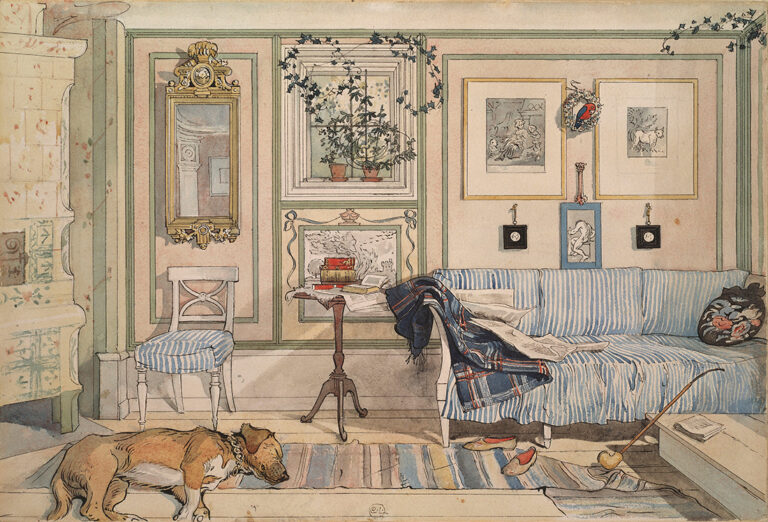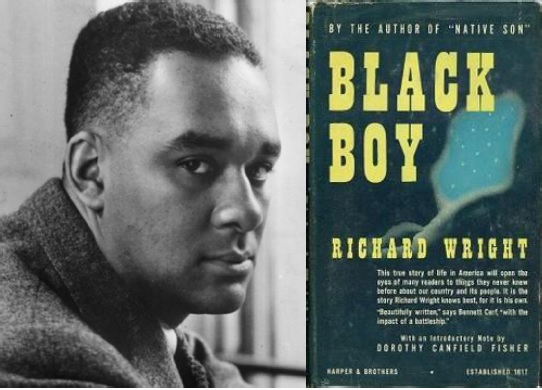The Silence Waits, Wild To Be Broken: Posthumous Publications and the Lives of Poems
I’ve worked in minor editorial capacities in the posthumous publications of two American poets, Larry Levis and Claudia Emerson, with different approaches and results. In the case of Levis, I worked as an editorial assistant to David St. John on the manuscript that became The Darkening Trapeze: Last Poems, published by Graywolf this year. At the time I worked on it, I knew it only as the “Uncollected Levis,” since the poems weren’t collected in Levis’s other volumes and the poems were not written at the end of his life, as “last poems” might imply. The collection’s subtitle, rather, refers to the fact that there will be no more works that arrive from library archives or Swiss vaults. This manuscript would be the second and final posthumous publication of Levis’s work, after 1997’s Elegy, a manuscript that was “all but completed” at the time of the poet’s death and posthumously edited by Philip Levine.
My role on the uncollected was simple: as a third-year grad student in Virginia Commonwealth University’s MFA program, I was to go to the Levis Archives held at VCU’s Cabell Library and check old xeroxes against the holdings to make sure these were the last drafts of the poems. The archives are messy, as Levis seldom dated drafts or filed them in any kind of discernible order. To make matters more complicated, he often moved whole passages between poems, splicing them in like pieces of genetic code. Later, after these checks, I was to type up the entire manuscript from the photocopies and return it to St. John, who would then send it on to a copy editor for final checks before it was submitted to publishers. My involvement lasted all of a couple of months. Early on, I approached the task like an auditor with a box of receipts, but I soon fell into what I can only describe as a “flow state,” akin to the immersion one feels during productive drafting, with Levis’s poems, especially as I typed them up in a Word document. Living within Levis’s language, his syntax, and his associative leaps, I found myself feeling like I was participating in a living history event, only without the hoop skirt and tourist script and butter churn.
The discussion surrounding the posthumous publication of writers’ works is certainly not new. In 2006, after the publication of Edgar Allen Poe & The Juke-box: Uncollected Poems, Drafts, & Fragments of Elizabeth Bishop, trench warfare broke out between the volume’s supporters and those who were against the posthumous publication of works the poet herself might not have wanted to see in print. Helen Vendler, reviewing the collection in The New Republic, referred to the work as Bishop’s “repudiated poems” and claimed that the poet would have been horrified by the publication of these “maimed and stunted siblings.” Bishop’s editor Robert Giroux felt differently: “No one’s claiming it’s finished work.” In Carol Rumens review of the collection on The Guardian, she contextualizes the work through editor Alice Quinn’s introduction: “If Bishop did not destroy her papers but gave them to a university library, she could not have seriously opposed a wider readership, provided we read, as Quinn encourages us to, as explorers of process rather than consumers of product.” Rumens goes on to suggest that these poems give readers “access to the sanctum sanctorum usually reserved for the academy” by showing us “the kinds of sketches and improvisations Bishop worked with.” The debate surrounding this posthumous volume and others seems one that cannot ever fully be resolved, especially when those volumes involve unfinished, discarded, or fragmented work.
Jeff Shotts, editor of Graywolf Press, describes his role in The Darkening Trapeze by Larry Levis and delineates good practices for contextualizing a posthumous volume:
In addition to acquiring the book for Graywolf, my role was really one of proofing—those Levis ampersands!—and also verifying the place names, names of people, French terms, and the like. Some of the drafts that Levis left behind were just that—drafts—and David felt that certain corrections to spelling, style, even a grammar case or two would have been Larry’s wishes and corrections he would have inevitably made. But of utmost importance was preserving the poems intact, as Levis left them. My role was also one of working with David to present this book of last poems in a way that was transparent about how it came about, since many readers assumed, as I did, that Elegy was the final book. So David needed to provide the helpful Notes and write the Afterword, and we worked on those pieces to present this book and make clear how David edited it and how certain poems, like the final poem, came to light after the publication of Elegy. Those Notes and Afterword are essential to publishing “new” posthumous work, I think, as they both clarify the textual authority and demonstrate the role of the editor of the book in its making. And they, rightly and movingly, praise the endurance of the work, its ability to survive its author.
These measures have likely contributed to readers’ experiences with the collection, which St. John calls “stunned,” citing that many readers “have marveled at the highly finished nature of many of the poems.” In a review here on Ploughshares, Elizabeth O’Brien writes that the volume “concludes [his] body of work with grace,” this “book whose lyrical depth and sweeping beauty is checked by gossip, unflattering confessions, jokes, and self-deprecation at every turn.” For those who, like Vendler assessing Bishop’s uncollected volume, insist that it’s unfair to the poet’s memory to publish such works, St. John has an answer: “in the end I believe The Darkening Trapeze is a breath-taking collection of poems that has earned its place on our bookshelves….this is a collection I was asked to edit by Larry Levis’s sister, and I’m happy to know how profoundly grateful Larry’s family, friends and longtime fans are that it exists.” Gregory Donovan cites that an uncollected volume like this urges him on to memorialize his friend and former colleague. When he was at Levis’s house on the day his body was found, Donovan felt he had been given a mission to uphold his work, after a quote from Hart Crane, “The dice of drowned men’s bones…bequeath an embassy.”
But one must wonder then who an uncollected volume is for. Is it for the friends and family of the poet? The readers who already know and love the work? If so, how one might argue that the relevance of any given collection is based strictly upon the individual reader, rather than the publishing market as a whole. No doubt, this work of Levis and the archives from which it comes will serve other purposes. Michele Poulos, director of A Late Style of Fire, the forthcoming documentary about Levis, sees biographical significance to the collection and the archives: “we also get a sense of the poet himself—what, for example, he kept in his office (a postcard of a boy fire-breather) and what books were shelved in his library (everything from Whitman’s Leaves of Grass to Jim Morrison’s biography, No One Here Gets Out Alive).”
The subtitle of Sam Anderson’s review of Nabokov’s unfinished novel The Original of Laura, published in 2009, hints at authorial dice rolling with unfinished work, however: “Nabokov never wanted us to read his unfinished last novel. Unless, thrillingly, he did.” Anderson writes of the unfinished work’s history:
As he drifted from hospital room to hospital room, and in and out of lucidity, he could see the complete book in his mind but couldn’t get it down on paper. He had to settle for reciting the finished product to (as he described it in a letter) “a small dream audience” consisting of “peacocks, pigeons, my long-dead parents, two cypresses, several young nurses crouching around, and a family doctor so old as to be almost invisible.” He died, in 1977, of fluid in his lungs.
Nabokov fully intended that his imaginary audience of birds and ghosts would be the largest group ever to enjoy Laura. Before his death, he left instructions that the manuscript should be destroyed. (Only amateurs keep drafts, he once said.) His wife, Vera—who had stopped him at least twice from burning drafts of Lolita—couldn’t bring herself to do it. Their son, Dmitri, couldn’t do it either. The manuscript sat in a Swiss bank vault for 30 years, the subject of occasional long-distance arguments over whether it should be published or burned.
Although Anderson fails to nail down specific reasons for why Nabokov could have, thrillingly, wanted us to read his unfinished novel, he hints that it’s in the wheelhouse of Nabokov’s sense of irony. “Charles Kinbote, the unreliable pseudo-scholar at the center of Pale Fire, seizes interpretive control over a dead poet’s manuscript only to abuse it so thoroughly that his authority gradually implodes,” he writes. Perhaps, then, Nabokov wrote in the ether the narrative of his own posthumous publication, as he knew that his unfinished work would be published against his professed wishes.
Whatever the writers intended wishes, the works of Elizabeth Bishop and Vladimir Nabokov found their way to readers. Despite criticism, these forebears may have laid the rail for the ongoing posthumous publications of contemporary writers, recently lost.
The office of Claudia Emerson, also a faculty member at Virginia Commonwealth University at the time of her death in 2014, was photographed in detail by Lauren Miner, with whom I’d been in the MFA program. She writes of her experience cataloging and digitally archiving the contents of Claudia’s office with her camera:
When Kent unlocked the door, it looked just as I had remembered it, as she had left it, the office of someone ready to sit down and get to work. (A bottle of water still sat, half finished, on the desk.) One of the challenges was to keep my composure, because Kent was with me, and because I needed to concentrate on taking the pictures. We stayed for several hours, and I took hundreds of pictures, trying to capture every detail I could, however small, however many shots it took (grateful that digital photography makes this possible), as best as I was able, knowing that soon the entire space would be dismantled and turned over to someone else. The objects in the space testified to Claudia’s passion for minutiae, and we found things that even Kent didn’t know were there (including some tiny metal sparrows dropped into the inkwell of her dictionary table, and a slip of paper taped into the mouth of a gargoyle figurine that said, “AARGH! Come back!”). Because Kent was there, I could ask him questions, and he could answer most of them.
This personal endeavor, later published in a feature on Blackbird, will no doubt become a key point for scholars looking into the life, work, and concerns of Emerson. Last year, I was asked by Claudia’s husband Kent to submit the poems from her unpublished manuscript called Claude Before Time and Space to literary journals. Claudia had asked Kent to ask me to help.
When I received the manuscript, I set it on my desk in the trunk room of my house on Cherry Street in the Oregon Hill neighborhood of Richmond. I refused to touch it for days. And then when I finally gave in to its contents, I wept. A space on the first page of “On Leaving the Body to Science” became blue-translucent with a tear, a window onto the words of the next page. The submission of these poems became a devotion, an elegy in an of itself, a kind of wreath-laying on my grief for her death. I queried an editor that only takes postal submissions and begged her to take a look at Claudia’s poems by email, so that they could go into the very next issue—something I would never do for my own work. And, yet, I felt almost sheepish, even unworthy at times, to be the one who was given this task—imposter syndrome. Then I felt bad for feeling strange about it. I wanted to leave myself out of the process entirely. In some ways, the act of working with Claudia’s poems was an act of finding a way to love the poems but also distance myself from them enough so that I could find them homes, a very different process than my work with the work of Levis, who I did not know except through his work.
As I think about all of the poets who have recently left us—C.D. Wright, Philip Levine, C.K. Williams, Belle Waring, Max Ritvo, just to name a few—I wonder about their ongoing legacies and the posthumous publications, how the work of seeing it into and seeing it in the world will affect us all differently, from those friends and families to future scholars, and everyone in between, who sees beyond the lives of poets, a life in poetry.


